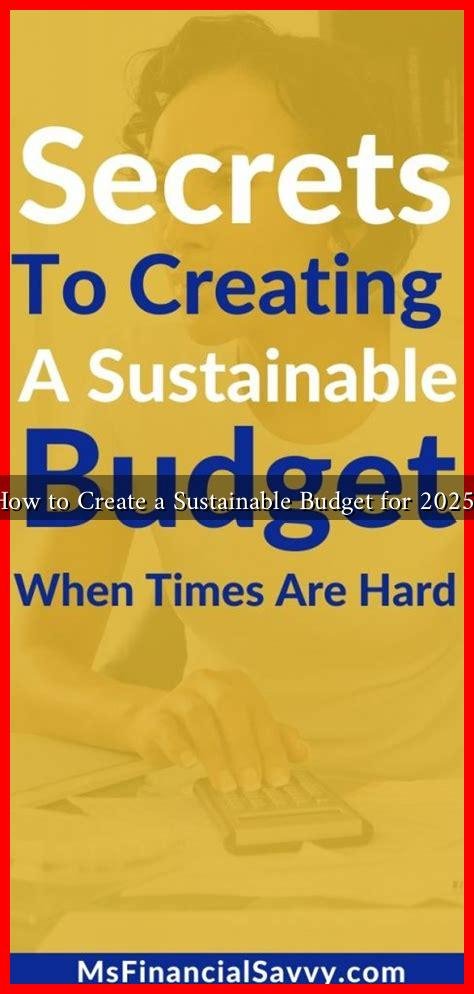-
Table of Contents
How to Create a Sustainable Budget for 2025
As we approach 2025, the need for sustainable budgeting has never been more critical. With rising costs, economic uncertainty, and environmental concerns, individuals and organizations alike must adopt budgeting practices that not only meet immediate financial needs but also promote long-term sustainability. This article will guide you through the essential steps to create a sustainable budget for 2025, ensuring that your financial decisions align with your values and goals.
Understanding Sustainable Budgeting
Sustainable budgeting goes beyond traditional financial planning. It incorporates environmental, social, and economic factors to create a holistic approach to managing finances. This method ensures that resources are allocated efficiently while minimizing negative impacts on the planet and society.
Steps to Create a Sustainable Budget
Creating a sustainable budget involves several key steps:
- Assess Your Current Financial Situation: Begin by reviewing your income, expenses, debts, and savings. Understanding where you stand financially is crucial for effective budgeting.
- Set Clear Goals: Define what sustainability means for you. This could include saving for a home, investing in renewable energy, or supporting local businesses.
- Prioritize Essential Expenses: Identify your necessary expenses, such as housing, utilities, and food. Allocate funds to these areas first before considering discretionary spending.
- Incorporate Sustainable Practices: Look for ways to reduce your environmental impact. This could involve budgeting for energy-efficient appliances, public transportation, or sustainable food options.
- Monitor and Adjust: Regularly review your budget to ensure it aligns with your goals. Adjust as necessary to accommodate changes in income or expenses.
Incorporating Sustainable Practices into Your Budget
To make your budget more sustainable, consider the following practices:
- Invest in Renewable Energy: If possible, allocate funds for solar panels or energy-efficient appliances. These investments can reduce long-term energy costs and environmental impact.
- Support Local Businesses: Prioritize spending at local shops and farmers’ markets. This not only boosts the local economy but also reduces the carbon footprint associated with transporting goods.
- Reduce Waste: Budget for reusable products, such as water bottles and shopping bags, to minimize single-use plastics.
- Educate Yourself: Stay informed about sustainable practices and financial management. Resources like the [Sustainable Business Network](https://sustainablebusinessnetwork.org/) can provide valuable insights.
Case Studies: Successful Sustainable Budgets
Several individuals and organizations have successfully implemented sustainable budgeting practices. Here are a few examples:
- The Smith Family: The Smiths adopted a zero-waste lifestyle, which significantly reduced their monthly expenses. By budgeting for composting and bulk buying, they saved money while minimizing waste.
- GreenTech Innovations: This company integrated sustainability into its financial planning by investing in green technologies. Their budget included funds for research and development of eco-friendly products, leading to increased sales and a positive brand image.
Statistics Supporting Sustainable Budgeting
Research shows that sustainable budgeting can lead to significant financial and environmental benefits:
- A study by the Global Sustainable Investment Alliance found that sustainable investments grew to $35.3 trillion in 2020, a 15% increase from 2018.
- According to the World Economic Forum, companies that prioritize sustainability can see a 20% increase in profitability over time.
Conclusion
Creating a sustainable budget for 2025 is not just a financial necessity; it is a moral imperative. By assessing your current financial situation, setting clear goals, and incorporating sustainable practices, you can create a budget that supports both your financial well-being and the health of our planet. Remember, sustainable budgeting is an ongoing process that requires regular monitoring and adjustment. As you embark on this journey, consider the examples and statistics provided to inspire your financial decisions. Together, we can build a more sustainable future.


